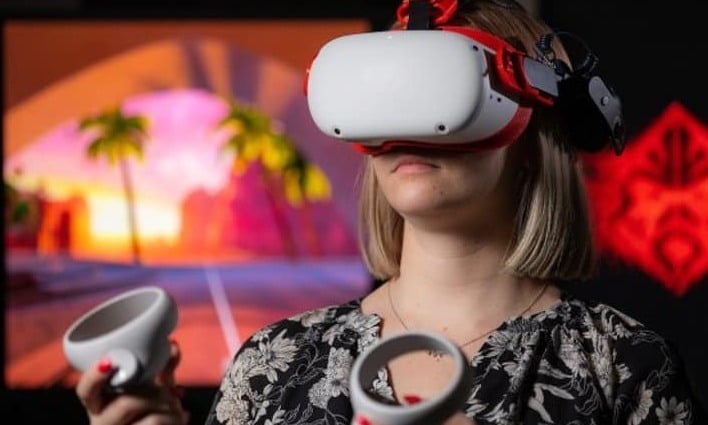New Research Claims People Who Experience Cybersickness In VR Can Adapt Over Time

Admittedly, "subject yourself to harmful stimulus over and over to build a tolerance" isn't exactly a shocking, revelatory concept. Still, there was no reason to assume that such a thing was possible considering that it hadn't been experimentally tested; most measures to counteract cybersickness focused on modifications to hardware or software. Now, thanks to a pack of researchers at Iowa State University, it has been tested, and the findings seem to indicate that there's hope for people who suffer nausea, fatigue, and disorientation after using VR.
The study employed a sample size of 150 undergraduate students. Students were called in to play VR survival sim Jurassic World Evolution across three separate sessions, and then on the fourth session, invited to play narrative puzzle title Shadow Point. Both games were selected for being "moderately intense" with regard to their likelihood to cause cybersickness.
The findings were pretty straightforward. Women and people who suffered from motion sickness from other sources (like reading in the car) were more likely to suffer cybersickness, and less likely to have their symptoms abate over further play sessions. However, overall sickness ratings on day three were 20% lower than on day one, and these gains also transferred over to the second game on the fourth day compared to a control group.
According to the report from Neuroscience News, the researchers posited the idea that shorter sessions with gentler games could be a better tactic for "getting over" cybersickness. For this initial research, they removed optional comfort settings in the games and had players attempting to go for 20 minutes at a time—a task that nearly half of the participants couldn't manage on the first day. However, by the third day, over 2/3 of the players completed the play session. That sounds like pretty rapid progress to us.
Also, while immersive computing is unlikely to ever fully replace a regular keyboard-and-mouse or touch display, its prominence is slowly growing for markets beyond gaming and simulators. It's possible that "tolerance for VR" could become a make-or-break quality for certain types of jobs. In that case, it's certainly heartening to hear that there may be hope for the afflicted—even if the advice amounts to "just keep at it."
Top image: Christopher Gannon/Iowa State University.


